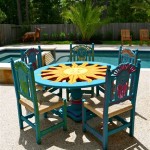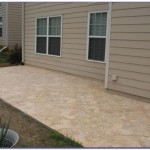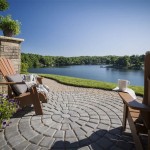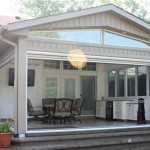Cool Patio Wall Fountain Ideas For Backyard Gardens In Phoenix
In the arid climate of Phoenix, Arizona, water features are not merely decorative additions to backyard gardens, but essential elements that contribute to the overall ambiance and ecological balance. Wall fountains, in particular, offer a practical and aesthetically pleasing solution for introducing the soothing sounds and visual appeal of water into limited spaces. The selection of a suitable wall fountain requires careful consideration of factors such as material durability, water conservation, style compatibility with existing landscape design, and the specific needs of the local environment.
A well-chosen wall fountain can transform a mundane patio into a tranquil retreat, providing a focal point that draws the eye and encourages relaxation. The sound of gently flowing water can mask unwanted noise from nearby streets or neighbors, creating a more peaceful atmosphere. Furthermore, the presence of water can attract birds and other beneficial wildlife to the garden, enhancing its ecological diversity. Considering the unique demands of the Phoenix environment, selecting the right wall fountain requires a strategic approach.
Materials and Durability in the Phoenix Climate
The intense heat and sun exposure characteristic of Phoenix necessitate the selection of wall fountain materials that are highly durable and resistant to degradation. Several options are commonly employed, each with its own advantages and disadvantages.
Cast Stone: Cast stone fountains offer a classic aesthetic and excellent durability. They are typically made from a mixture of cement, aggregates, and pigments, molded to resemble natural stone. Cast stone is resistant to cracking and fading under prolonged sun exposure. However, it is a relatively heavy material, requiring a sturdy wall structure for support. The porous nature of cast stone may also lead to water loss through evaporation, particularly during the hottest months. Regular sealing can help to mitigate this issue.
Resin: Resin fountains are a lightweight and cost-effective alternative to cast stone. They are typically made from molded plastic or fiberglass, often with a faux stone or metal finish. Resin fountains are relatively easy to install and maintain, and they are resistant to cracking and fading. However, they may not be as durable as cast stone, and they can be susceptible to damage from extreme heat or impacts. The aesthetic appeal of resin fountains may also be less convincing than that of natural stone or cast stone.
Metal: Metal fountains, such as those made from copper or stainless steel, offer a sleek and modern aesthetic. Copper fountains are particularly attractive due to their natural patina, which develops over time, adding to their character. Stainless steel fountains are highly durable and resistant to corrosion. Metal fountains can be prone to overheating in direct sunlight, potentially causing discomfort to those who touch them. The reflective surface of metal can also create glare, which may be undesirable in certain settings.
Terra Cotta: Terra cotta offers a rustic and natural aesthetic that complements many garden designs. It is a relatively inexpensive material and readily available. However, terra cotta is porous and susceptible to cracking in freezing temperatures. While freezing is not a significant concern in Phoenix, the porous nature leads to high water evaporation rates. Glazed terra cotta options offer some protection against water loss and cracking, but they can be more expensive.
The choice of material should be based on a balance of aesthetic preferences, budget constraints, and the specific environmental conditions of the backyard garden.
Water Conservation and Efficiency
In a desert environment like Phoenix, water conservation is paramount. Wall fountains should be designed and operated to minimize water loss through evaporation and leaks. Several strategies can be employed to improve water efficiency.
Recirculating Pumps: All wall fountains should utilize a recirculating pump to continuously cycle the water. The pump should be sized appropriately for the fountain to ensure adequate water flow without excessive energy consumption. Variable speed pumps offer greater control over water flow and energy usage.
Covered Reservoirs: The reservoir that holds the water should be covered to reduce evaporation. A simple lid or even a bed of decorative rocks can help to minimize water loss. The cover should be designed to allow for easy access to the pump for maintenance.
Strategic Placement: Placing the wall fountain in a shaded area can significantly reduce evaporation rates. Consider planting trees or shrubs to provide shade during the hottest parts of the day. Avoid placing the fountain in windy areas, as wind can accelerate evaporation.
Regular Maintenance: Regular maintenance is essential for preventing leaks and ensuring efficient operation. Check the fountain regularly for cracks or damage, and repair them promptly. Clean the pump and reservoir to remove debris that can impede water flow and reduce efficiency. Monitor water levels and replenish as needed, taking note of how frequently water needs to be added to identify potential leaks or excessive evaporation.
Smart Controllers: Integrating smart controllers can optimize water usage. These controllers can monitor water levels, adjust pump speeds based on environmental conditions, and even detect leaks, alerting the homeowner to potential problems. Smart controllers can also be programmed to turn the fountain off during periods of high water demand or low usage.
By implementing these water conservation strategies, it is possible to enjoy the aesthetic and psychological benefits of a wall fountain without contributing to water scarcity.
Design Considerations and Style Compatibility
The design of the wall fountain should complement the existing landscape design and architectural style of the home. Consider the overall theme of the backyard garden and choose a fountain that enhances its aesthetic appeal.
Rustic Charm: For gardens with a rustic or Southwestern theme, consider a wall fountain made from natural stone or cast stone with a rough texture. Earthy tones and simple designs are well-suited to this style. Incorporating elements like cacti, succulents, and desert plants can further enhance the rustic charm.
Modern Minimalism: For gardens with a modern or minimalist theme, opt for a sleek and geometric wall fountain made from stainless steel or polished concrete. Clean lines and simple shapes are key to achieving a contemporary look. Pair the fountain with minimalist landscaping, such as ornamental grasses and strategically placed rocks.
Mediterranean Elegance: For gardens with a Mediterranean theme, choose a wall fountain made from terra cotta or cast stone with intricate details. Warm colors and ornate designs are characteristic of this style. Incorporate elements like olive trees, lavender, and rosemary to complete the Mediterranean ambiance.
Asian Zen: For gardens with an Asian-inspired theme, consider a wall fountain made from bamboo or natural stone with a simple and understated design. The sound of gently flowing water is an integral part of the Zen aesthetic. Incorporate elements like moss, bamboo plants, and Japanese maples to create a tranquil and contemplative space.
Size and Scale: Consider the size of the patio and the surrounding landscape when choosing a wall fountain. A fountain that is too large can overwhelm the space, while a fountain that is too small may be overlooked. Choose a fountain that is proportioned appropriately to the size of the wall and the overall scale of the garden.
Lighting: Incorporating lighting can enhance the visual appeal of the wall fountain, especially at night. Underwater lights can illuminate the water and create a dramatic effect. Uplighting can highlight the texture and form of the fountain. Consider using energy-efficient LED lights to minimize energy consumption.
Selecting a wall fountain that harmonizes with the existing design elements of the backyard garden will ensure a cohesive and visually appealing outdoor space. The careful assessment of material, efficiency, and aesthetic considerations is key to creating a tranquil and sustainable water feature in the Phoenix environment.

Garden Fountain Design Ideas Landscaping Network

24 Backyard Water Features For Your Outdoor Living Space Extra Storage

Outdoor Wall Fountains For Gardens Patios

Modern Outdoor Fountains For Stylish Serene Landscapes The Blissful Place

Outdoor Wall Fountains For Gardens Patios

24 Backyard Water Features For Your Outdoor Living Space Extra Storage

Outdoor Water Features From System Pavers

Garden Fountain Design Ideas Landscaping Network

24 Backyard Water Features For Your Outdoor Living Space Extra Storage

Garden Fountain Design Ideas Landscaping Network
Related Posts








